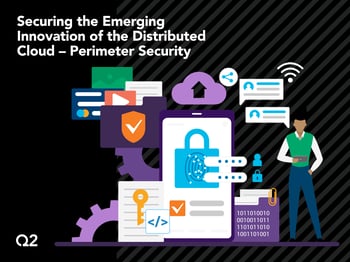What creates almost 2 million jobs a year, is the backbone of the U.S. economy, and has 118 million thumbs?
That’s right, it’s small business.
In honor of National Small Business Week, this post is all about the role of these startups, side-hustles, sole-proprietorships, and other ventures—as well as how you can support them (and vice versa).
Small businesses are responsible for roughly half the nation’s employment, 43% of private sector payroll, and 46% of private sector output
Small businesses are responsible for roughly half the nation’s employment, 43 percent of private sector payroll, and 46 percent of private sector output. They are a vital piece of our economy. This makes supporting them extremely important—and, for community financial institutions (CFIs), much of this support means providing them with the right technology.
This is already happening, to a degree. The last decade has seen the small business banking relationships drift from near-daily branch visits to digital channels. But this shift from face-to-face interaction isn’t necessarily a bad thing. As potential providers of financial technology to small businesses, CFIs have a lot to gain from embracing their digital channels—as do your account holders.
First and foremost, your small business accounts will appreciate convenience.
A quarter of small business owners regularly log more than 60 hours at work, and 70% find their weekends regularly occupied by running their business.
This is a biggie. Small business owners often begin their ventures as a way to break away from nine-to-five tedium and find a kind of freedom—but it rarely pans out like that. A New York Enterprise Report states that most small business owners work at least 50 hours per week, a quarter of them regularly log more than 60 hours at work, and 70 percent even find their weekends regularly occupied by running their business.
Anything and everything you do to help them save time makes you more valuable to your business customers. This includes offering them the ability to do virtually everything online—particularly, via their mobile devices. Make it easy to open accounts or apply for business loans online; give them the ability to set up or approve payroll via their phones. In short, help them avoid making trips to your branches—however good your customer service is. It’s nothing personal; they just don’t have time.
If you’re wondering what’s in it for you, don’t worry. Your relationship with your customers isn’t gone; it’s just different—arguably better.
For example: the advent of data analytics and machine learning lets you take account holders’ transactional data, the information you gain through their online interactions, and other data, and turn it into an understanding of their needs. Increases in payroll may reveal growth, for example, and suggest that a customer is in the market for a small business loan to help them navigate the immediate demands of that growth. This sort of granular understanding just wasn't possible in the era of brick-and-mortar.
And coupled with, for example, a simple (and mobile) e-commerce approach to cross-selling loans or other business services, your ability to leverage data could really level up your customers’ time-savings, while also boosting engagement and growth for your FI.
After all, what’s more likely to close loans or please your customers: an afternoon spent filling out forms at a branch, or an easy mobile loan application that auto-populates from existing account holder information?
Positive experiences like these help you remain an ever-present—if digital—companion to your business customers on their financial journeys. And, considering that a big chunk of consumer accounts are low-balance cost centers for your FI, being able to effectively serve, support, and sell to businesses can give your bottom line a boost—all while helping small businesses retain their title as the vital backbone of our economy.




